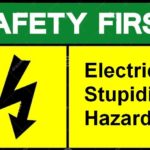Efficient power conversion technology now makes buoy systems practical for powering real-world devices.
Autonomous offshore power systems (AOPS) now capture mechanical wave energy and convert it into usable power for a wide range of oceanic applications such as offshore oil and gas exploration and production, offshore carbon sequestration, oceanographic research, aquaculture and homeland defense.

An example comes from Columbia Power Technologies, Inc. (C-Power) in Corvallis, Ore. Its systems provide kilowatt-scale power for offshore data communications networks and were initially devised through a Darpa project called Wave Energy Buoy Systems (WEBS).
C-Power’s latest AOPS device is called the SeaRAY. SeaRAY replaces electric tethers fed from a ship or diesel generator that have historically powered underwater vehicles, subsea operating equipment and open-ocean sensors. Now, the SeaRAY device generates power from waves by acting like a large buoy with arms. Waves move the arms up and down creating relative motion between the float and body of the buoy. The bigger the wave, the higher the power pulse. The arms are mechanically coupled to an electric generator.

At the top and bottom of the wave motion, the generator is not moving. The velocity of the arms increases from zero to some peak (based on wave size). This motion causes the generator to turn, accelerating rotationally to some max RPM. Then it decelerates, stops, and repeats for each wave. This process is cyclical with the stochastic waves.
The resultant voltage coming out of the generator has a continuously varying amplitude at a continuously varying frequency. The bigger the wave, the larger the amplitude of the voltage envelope and the larger swing in frequency. The electrical power, voltage and current, is converted to usable energy via power electronics and energy storage.
The key power design challenge for C-Power was to reconcile complex ocean wave energy properties with the demanding power conversion requirements of the SeaRAY.

This included an ultra-wide 30:1 input range, which reflects the unpredictable nature of ocean waves. The SeaRAY power conversion technology is from Vicor Corp. The power supply converts the energy from the generator and feeds a continuously varying current into a large bank of super capacitors. The energy from the capacitors is used to maintain a charge on the batteries and power auxiliary buoy systems. The power from the buoy can be used for any application. This process allows for high peak power conversion to supply energy to loads, including a small amount of power for the AOPS wave energy converter (WEC) supervisory control and data acquisition system. The batteries are there to supply power to the onboard equipment in case of calm water and no waves.
The scalable power design of the SeaRAY uses Vicor BCM fixed-ratio bus converters and PRM regulator modules with complex multistage discrete converters to efficiently convert turbulent, unpredictable wave energy and provide controlled power. This enabled C-Power to increase the SeaRAY design’s conversion efficiency from about 50% to a range of 85 to 94%.
The Vicor Power Systems design team delivered a unit capable of accepting external control signals from the C-Power system to match precise power conversion needs in real time. In addition, the power conversion topologies used in Vicor modules help to minimize electromagnetic interference and noise onboard the SeaRAY that could otherwise compromise sensor measurement accuracy.
“We really needed wide-range DC-DC, something that we could control and regulate as we’re converting pulsed ocean wave power into a semi-stable DC bus,” said Joe Prudell, a C-Power senior R&D electrical engineer. “This is extremely challenging. Being able to do that at various power levels using Vicor’s power modules really is an advantage.”
The SeaRAY design also makes autonomous, remote data communications possible by transmitting what happens in the ocean to the cloud in real time. Previously, marine data-gathering systems have been limited in the breadth and frequency of data collection. Using cellular networks and satellite communications to pass data in real-time between the cloud and the SeaRAY allows collection of more and richer data that can be delivered more often.
“There are plenty of companies trying to capture and convert wave energy, but it’s another thing to do something in a small, compact form factor and still satisfy what customers need from an operational and logistics perspective,” C-Power CEO Reenst Lesemann said. “That’s where we, with Vicor’s assistance, have been able to stick our chins out so much further than everyone else.”







thank you for the article